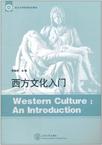西方文化入门
出版时间:2011-10 出版社:邢驰鸿 山东人民出版社 (2011-10出版) 作者:邢驰鸿 编 页数:340
内容概要
《临沂大学优秀校本教材:西方文化入门》是遵循着西方文化现象出现的先后顺序来编纂的,这样学生在学到西方人文知识的同时,也对西方历史的发展有一个大体的了解。《临沂大学优秀校本教材:西方文化入门》通过对古希腊文化、古罗马文化、基督教文化、中世纪文化和西方近现代文化的系统介绍,使学生了解西方文化史中的一些重大事件和重要人物,认识不同时代的时代精神和基本文化面貌,并且对西方文化各主要构成部分之间的动态关系、各自特色和相互联系有所了解,为全面提升学生们的文化素养奠定必要的知识基础。所以说,探索西方文化的意义不仅在于认识它的起源、内涵与特质,也不仅在于唤起一种文化忧患意识,而且在于培养一种公民意识、现代意识。
书籍目录
君子务本。本立而道生——《临沂大学优秀校本教材》总序前言Chapter 1 Greek CultureIntroduction1. History of Ancient Greece1.1 Age of Aegean Civilization(c. 3000~1000BC)1.2 Dark Age/Homeric Age/Heroic Age(1100~750BC)1.3 Age of City-States1.4 Classical Age(500~323BC)1.5 Hellenistic Age(336~146BC)2. Culture of Ancient Greece2. 1 Greek Poetry2.2 Greek Drama2. 3 Historiography2. 4 Greek Mythology2. 5 Greek Philosophy2. 6 Greek Arts and Architecture2.7 Greek Science2.8 Greek Religion2.9 Olympics3. ConclusionChapter 2 Roman CultureIntroduction1. History of Romel. 1 Founding of Rome1.2 The Roman Republic(509~264BC)l. 3 Roman Empire(27BC~476AD)1.4 Eastern Roman Empire(395~1453)2. Roman Culture2.1 Latin2.2 Roman Law2.3 Roman Literature2.4 Art3. Romans and Greeks3.1 Greco-Roman Relations3.2 Comparisons between the Ancient Greeks and Romans4. ConclusionChapter 3 Christian CultureIntroduction1. The Bible2. The Old Testament2. 1 The Pentateuch2.2 Historical Books2, 3 The Poetical Books2.4 The Prophets3. The New Testament3.1 The New Testament3. 2 Jesus Christ3.3 Peter3.4 Paul4. Translation of The Bible5. Catholic Church and Orthodox Church5.1 Catholic Church5.2 Orthodox Church6. ConclusionChapter 4 Medieval CultureIntroduction1. The Middle Ages2. The Early Middle Ages(c. 350,-,-c. 1050)2. 1 Breakdown o{ Roman Society2.2 Church and Monasticism2. 3 Carolingians2.4 The Holy Roman Empire3. The High Middle Ages(c. 1050——,c. 1300)3.1 The Norman ConquestChapter 5 Culture in the RenaissanceChapter 6 Culture in the 17th CenturyChapter 7 Culture in the EnlightenmentChapter 8 RomanticisChapter 9 Realisml~lmlograpny
章节摘录
版权页:插图:The dominant position of the maritime Athenian "Empire" threatened Spartaand the Peloponnesian League(伯罗奔尼撒联盟) of mainland Greek cities. Inevita-bly, this led to conflict, resulting in the Peloponnesian War(伯罗奔尼撒战争, 431~404BC). Though effectively a stalemate for much of the war, Athens suffered anumber of setbacks. The Plague of Athens in 430BC followed by a disastrous mili-tary campaign known as the Sicilian Expedition severely weakened Athens. An esti-mated one-third of Athenians died, including Pericles, their leader.Sparta was able to fomentc挑起) rebellion amongst Athens's allies, further re-ducing the Athenian ability to wage war. The decisive moment came in 405BC whenSparta cut off the grain supply to Athens from the Hellespont. Forced to attack, thecrippled Athenian fleet was decisively defeated by the Spartans under the commandof Lysander at Aegospotami. In 404BC Athens sued for peace, and Sparta dictated apredictably stern settlement: Athens lost her city walls(including the Long Walls),her fleet, and all of her overseas possessions.1. 4. 2 4th Century BCGreece thus entered the 4th century under a Spartan hegemony(霸权), but itwas clear from the start that this was weak. A demographic(入口的) crisis meantSparta was overstretched, and by 395BC Athens, Argos, Thebes, and Corinth feltable to challenge Spartan dominance(统治), resulting in the Corinthian War(395~387BC,科林斯战争). Another war of stalemates, it ended with the status quo(现状)restored, after the threat of Persian intervention on behalf of the Spartans.The Spartan hegemony lasted another 16 years, until, when attempting to im-pose their will on the Thebans, the Spartans suffered a decisive defeat in 371BC.The Theban general Epaminondas then led Theban troops into the Peloponnesus(怕罗奔尼撒半岛), whereupon other city-states defected from the Spartan cause. TheThebans were thus able to march into Messenia and free the population.
编辑推荐
《西方文化入门》是临沂大学优秀校本教材之一。
图书封面
评论、评分、阅读与下载
